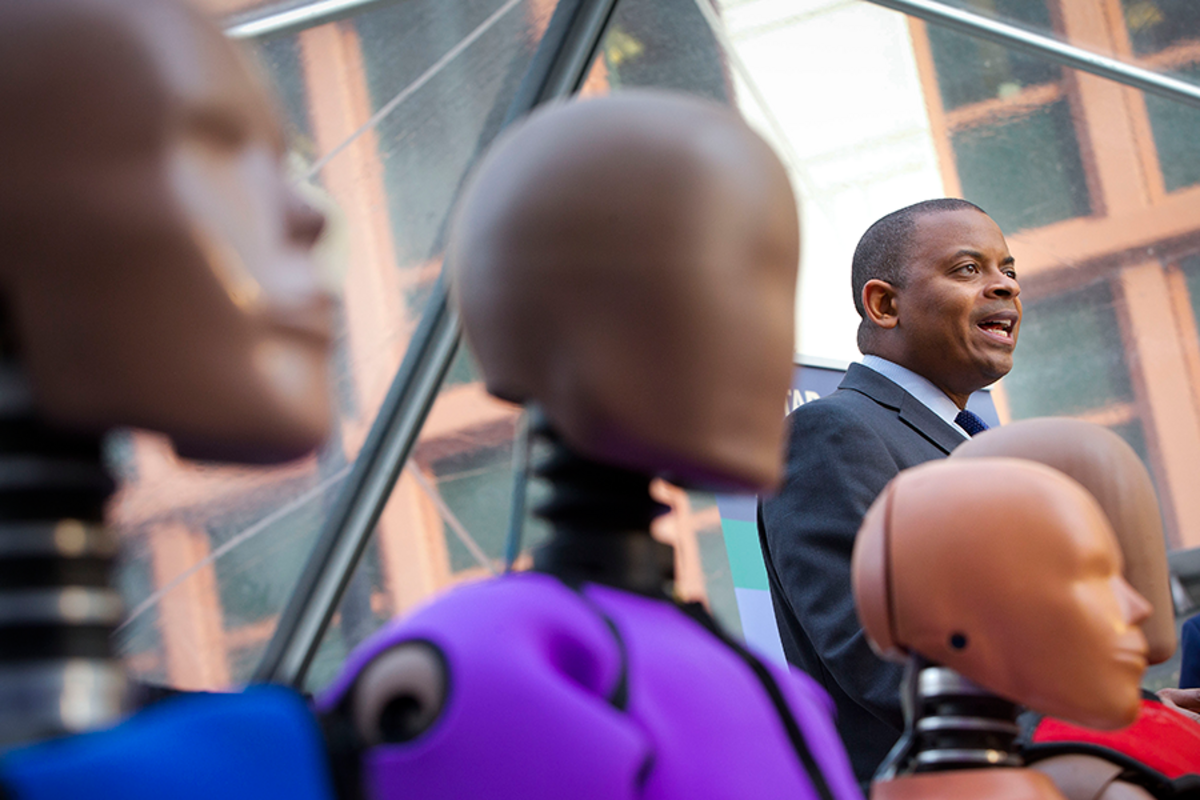US ratchets up car safety standards. Making room for self-driving cars?
Loading...
We know that autonomous cars without steering wheels or pedals are likely in our future. But in some ways, they're already here, at least as building blocks that will ultimately allow cars to drive themselves.
There are features in cars now that ensure drivers stay in their lanes, adjust their speed on the highway, and automatically brake when they sense that a driver will otherwise hit something (or someone).
Technologies such as these have taken control out of the hands of drivers, who are , making cars smarter and safer. Cars are getting so much safer, the US Highway Traffic Safety Administration calls it .” In just the last decade, car fatalities have dropped 36 percent, it says.
Now, to help keep regulations on pace with innovation, the administration says it's “raising the bar” on its 5-Star Safety Ratings, which appear on the window stickers of new cars. This will encourage development of even more sophisticated safety technologies, . The same technologies that will also help make driverless cars possible and safe.
Starting with 2019-model cars, the administration will take new crash prevention technologies into account when it crash-tests new cars to determine how well they protect drivers.
“Nudging and making it a little harder for folks to get a five star, by pushing the edges of what technology can do to make cars safer, is another part of our strategy,” US Secretary of Transportation Anthony Foxx told Wired.
By making it harder for cars to get top rankings, the government will help encourage car makers to get those features into more cars. This will in turn allow real-world testing of new autonomous features, help drive down their costs, and , as Wired pointed out, one of the biggest barriers to widespread adoption of driverless cars, some people think.
According to Russ Rader, spokesman for the industry trade group , which has its own safety ratings system, roughly 50 percent of the luxury and affordable 2015 cars that the organization recently tested have automatic emergency braking or a collision warning feature, or both, at least as an option. This number grows every year, he says.
“We’ve made a lot of progress in how vehicles protect people when crashes happen,” Mr. Rader tells ���Ǵ��� in an interview. “But the future is really looking to technology to prevent a lot of crashes from happening altogether.”
Though such technologies are instrumental to the development and widespread adoption of driverless cars, “full autonomy is a long time away,” says Rader.





